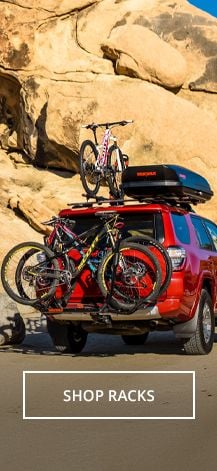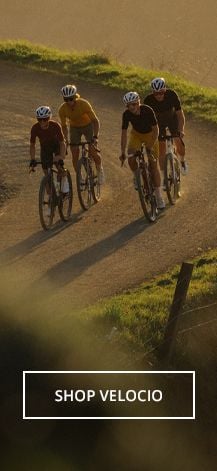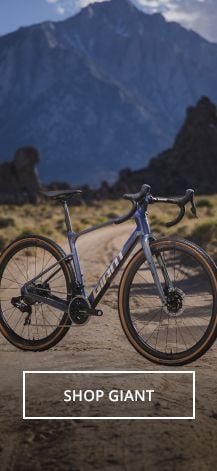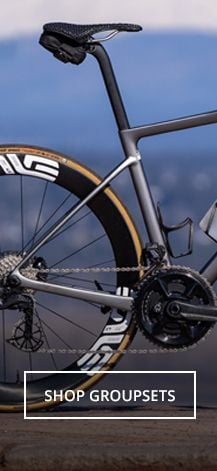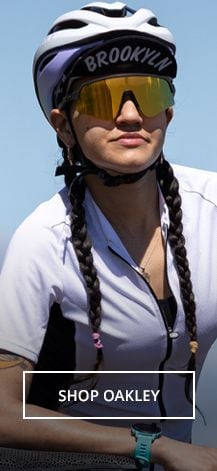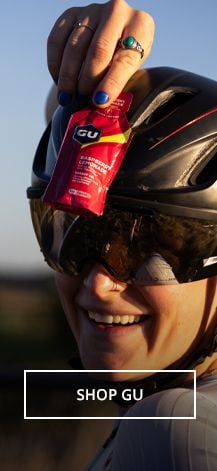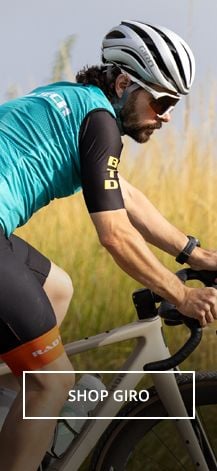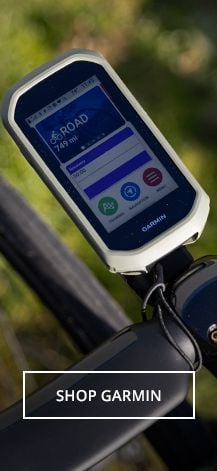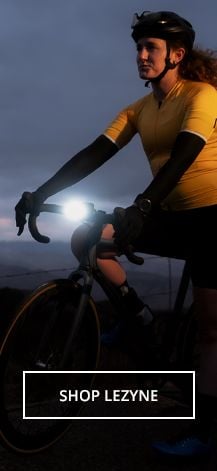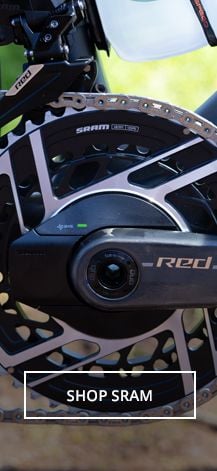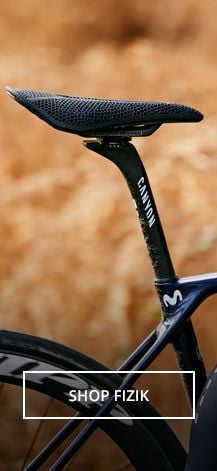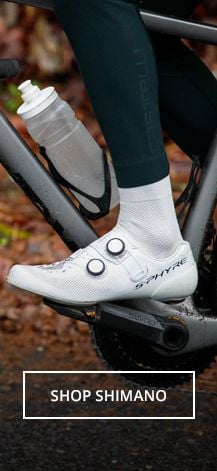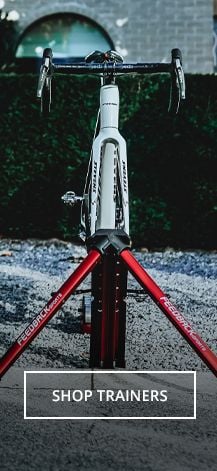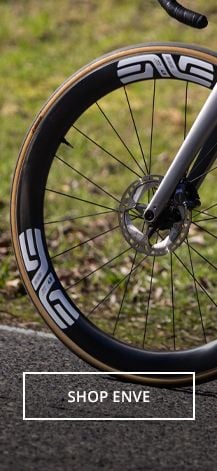45NRTH Dillinger 5 Studded Fat Bike Tire Review

INTRO:
I'm from Pittsburgh, Pennsylvania, and grew up riding mountain bikes in the snow. I remember taking my old Trek out on cold winter days and seeing how far I could go before I got mad from falling too much. It was never more than a mile or so, but I have fond memories of blasting through snowbanks. Apparently, I wasn't the only one trying their luck at this kind of riding, as snow biking became popular all across the US in the years that followed - largely due to fat bikes and studded tires.
When I started working at BikeTiresDirect, I learned more and more about fat bikes and the importance of the tires in their off-road performance. Fat bike tires take the place of suspension systems and provide different levels of grip and shock absorption depending on the PSI used. It is truly a ride experience that is all about the tires.
Of all the fat tires in our lineup, 45NRTH's 27.5" Dillinger 5 studded tires are by far the most eye-catching. With their tan walls, generous stud placement, and aggressive tread pattern, they looked like they could climb a glacier in style. I knew I had to try them out. I picked up a pair, and before I knew it, I was planning a trip to the mountains next to Bend, OR to test out the tires on a network of snowy fat bike trails.

THE MOUNTAIN BIKE TEST SUBJECT:
A good friend of mine - let's call him David (because his name is David) - had purchased a Trek Farley a few years ago but had since lost interest in the initial 'cool' factors of the fat bike. The wide tires and rigid fork had initially seemed unique and interesting, but after slowly trudging down the trail one too many times, he felt like the rig was lacking.
He even upgraded the drivetrain to a SRAM NX 1x11, swapped the old 26" wheelset for a 27.5," added a dropper post, and replaced the rigid front fork with a Manitou shock to breathe more life into the steed. Yet, after all these upgrades, the bike sat idle in his basement for months, while he shredded on his full suspension Canyon Spectral AL MTB, which was far more nimble and quick on Oregon singletrack.
It occurred to me that this bike was the perfect test subject for the 45NRTH Dillinger 5 ride review. We brought this bike and a fat Surly Pugsley with non-studded tires to use as a 'control' in our experiment.
SETTING UP THE 45NRTH DILLINGER 5 FAT BIKE TIRES:
But first, let's talk more about these Dillinger 5s. Taking them out of the package, the first thing I noticed was the supple nature of the rubber. Although they are only 60 TPI (threads per inch), compared to their 120 TPI sibling in the Dillinger 5 tire family, they felt very pliable while still maintaining excellent construction within the tire casing.
It should be noted that these tires are tubeless-ready, which is a rather uncommon feature for studded tires. With a solid rim tape job and an ample quantity of sealant, these tires can run tubeless without issue, and those coveted lower tire pressures can be achieved without fear of a pinch flat. For these reasons, I opted to set it up tubeless.
Both tires mounted on the rim easily, and I seated the bead of the first tire on the rim without a problem using a floor pump. The second tire was a little more fickle and compressed air was required to achieve that sweet 'pop' of the bead locking into the rim. After adding a generous 4 oz. of Orange sealant through the stem for each tire and taking the bike for a little test ride to disperse the sealant, the bike was ready to roll. The tan sidewalls matched perfectly with the light, blue frame, and finally, David found the perfect niche for his fat bike: a snow shredding beast.

TESTING THE 45NRTH DILLINGER 5 FAT BIKE TIRES ON SAND:
Before I jumped into snow riding, I first wanted to test the tires on a dry trail. On the way to Bend from Portland is a town called Sisters, which features a marvelous little network of trails leaving straight from town. The dirt is usually dry and sandy from all of the volcanic rock, but there were icy sections here and there.
On the trail, the first thing that I noticed was how much it doesn't feel like a fat bike tire. After bouncing around on less robust Maxxis Minions and Surly 'Nates' at low pressures (8 psi or so), the Dillingers proved to roll straight and horizontally throughout the ride, without feeling like 50% of the rolling power was being driven into the ground. The studded tires and the wide surface area of the supple rubber also had an impressive performance on the narrow, sandy switchbacks, providing excellent traction around corners and much-needed grip on steep rock gardens.
On the descents, the tires were more nimble and fast-rolling than I expected, but at the end of the day, it's still a 4.5in-wide fat bike tire, and speed just isn't its focus. We sent the tires off a few jumps and they made it, but in good conscience, I can't say that they were designed for jumping either.
After finishing the ride it was clear to me that these studded tires weren't just one-hit wonders for the snow but also excellent for the dry single track - I don't know about you but I enjoy being able to ride my bike on days where there aren't 5 feet of snow on the ground!

BRING ON THE SNOW!!
Part I: Night
Finally, we made it to the snow. Being all too eager, we decided to first test the tires at night on the groomed fat bike trails in Wanoga Sno-Park on the slopes of Mt. Bachelor outside of Bend. We brought the tire pressure down from 8psi almost to 2 psi and turned our NiteRiders to full blast. The trails were hard-packed and icy from all the riders earlier in the day, so while I was slipping around corners on my non-studded tires, David was leaning like he was rounding turn two on the velodrome!
A perfect example of the traction on the Dillingers came at the end of the night ride when David and I rode over the very same patch of black ice in the parking lot. He went through it unfazed, and there I was, laid out on the ground. 45NRTH dominates the stud game with their concave, carbide-aluminum stud design, which creates a bowl shape on the protruding metal and results in twice the surface area for increased grip and traction. The addition of studs certainly increases the price point, but reasonably so. They add a HUGE advantage on snow and ice, and if you're willing to pay extra to not 'eat it' on the trail (like me), then studded tires are the answer.

Part II: Day
The next day, we woke up and readied our steeds to tackle the ultimate fat tire test: Swampy Sno-Park. Swampy is home to a hilly set of snowshoeing trails that wind around a frozen lake. The snow is somewhat packed from hikers, but it is certainly still loose powder - and if you veer at all from the tracks, you'll inevitably sink into 5 feet of snow. The first descent was amazing - flowy turns through narrow gaps in the trees. Compared to the non-studded tires on the bike I was riding, the 45NRTHs on David's Farley ripped around corners like it was a dry single-track trail in the summer. While I was braking, he was gaining speed.
Then the first hill hit. I charged it, but immediately lost power and put my foot down, sliding backward before I sank into a snowbank. David shifted into his lowest gear and motored all the way to the top - those tires sticking to the snow like mountaineering crampons. For the rest of the ride, the Dillingers flexed all of their strengths. I, on the other hand, was many bike-lengths behind him, marveling at the power of his machine. Ultimately, the true strength of the Dillinger 5s lies in the tires' performance. It's the same difference between raging a bike park with a Mongoose MTB from Walmart or a 2021 Santa Cruz Nomad - one is just going to work better than the other!

FINAL VERDICT ON THE 45NRTH DILLINGER 5 FAT BIKE TIRES:
45NRTH is the only cycling brand focused exclusively on winter riding, and it shows in their products. Ever since their founding, they have been at the cutting edge of tire tech, creating the first high-performance fat bike tire (Husker Du), the first studded fat bike tire (Dillinger 4), and the first tubeless fat bike tire (Vanhelga). Not to mention the improvements in rubber compounds, stud designs, and tire casings they have developed over the last 9+ years of relentless product testing.
By the time the Dillinger 5 that I tested hit the market in 2020, it's clear that 45NRTH worked out all the kinks. In terms of studded fat bike tires, I think it's safe to say that these are currently the best on the market. Whether you are a competitive racer, a mountain biker looking for some winter miles, or a year-round commuter, the Dillingers will not disappoint, and odds are, you'll have a killer ride.
Shop our entire selection of 45NRTH fat bike tires and apparel at the BikeTiresDirect 45NRTH brand page.
Words by Ken Wahrenberger / Bike enthusiast, Portland transplant from Pittsburgh, and that guy at the other end of the 1(800) number
Photos by Bertrand Morin / @bertrand_morin

